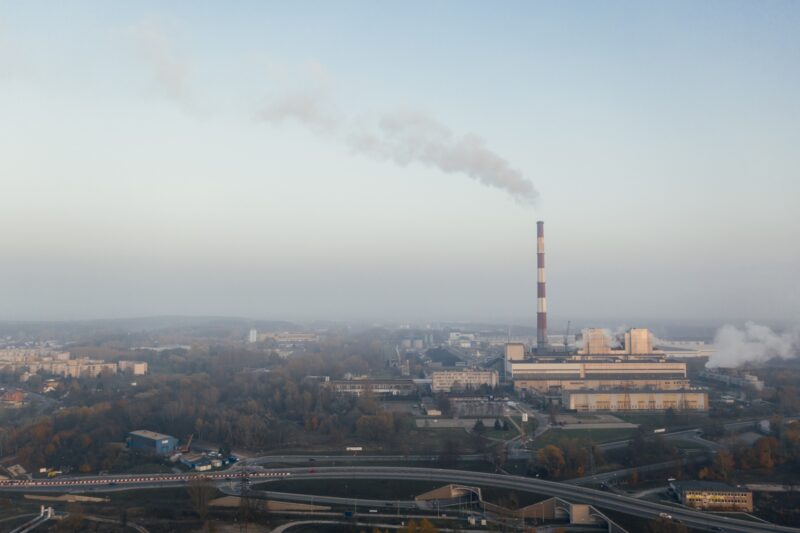Recent development in the EU’s climate policy: EU trading system reform could stop investment in new coal power plants
Share

On September 18, EU ministers of environment adopted two important documents. The first one was EU positions for the Paris negotiations and the second on market stability reserve for the EU trading system (EU ETS).
In the first, the goal of “at least 40% domestic reduction in GHGs emissions by 2030 compared to 1990” as already adopted by the EU heads of states in October 2014 and confirmed the EU’s INDC from March 2015, was re-stated. So not many surprises there, but it would have been nice to see an improvement in this target which the Climate Action Tracker shows to be feasible.
Also a long-term target of decarbonisation by 2050 didn’t find its way into the final version of the EU Mandate. As readers might recall, the G7 leaders called in June for decarbonising completely “over the course of this century” so a further signal from the European Union could have been useful. Instead the document refers to the EU’s 80-95% by 2050 target “in the context of necessary reductions according to the IPCC by developed countries as a group”. This wording has been adopted for the first time in “A Roadmap for moving to a competitive low carbon economy in 2050” from October 2009. However, it would have been useful if the EU had updated this position, to at least reflect the language of the G7, which referred, in the context of global emission pathways for 2050, to the “upper end of the latest IPCC recommendation of 40 to 70% reductions by 2050 compared to 2010”. Moving towards the upper end of these emission reductions globally for 2050 would imply a need for the developed countries emission reductions to move towards the upper end of the 80-95% reduction target.
The impact of Poland on the content of the Mandate showed itself also in changed wording. Instead of “decarbonisation”, the document speaks of “climate neutrality”, a very different and less precise concept. According to Poland’s representative, Korolec, this allows emitters to plant trees or capture CO2 emissions instead of reducing emissions (Article in Polish). EU Commissioner for Climate and Energy, Miguel Canete, pointed out that he doesn’t have any problems with changing the wording as long as the ambitions are upheld.
The second important document adopted by the Council of Ministers was the decision on market stability reserve, which is part of the major EU ETS reform for the period after 2020. The main goal of this reform is to increase the effectiveness of emissions trading by decreasing the oversupply of emissions allowances. This should happen by capping the oversupply of allowances at 833 million tCO2. Without this reform the estimated oversupply would reach 2.6 million allowances in 2020. Furthermore, the cap for emissions from power stations and other fixed installations set at 2.084.301.856 allowances in 2013, would decrease after 2020 by 2.2% annually, instead of yearly decrease by 1.74% between 2013 and 2020.
Significant changes concern sectors described as threatened by carbon leakage. Their number is due to decrease from 175 to 50. Companies from these 50 sectors will receive free allowances up to a certain benchmark. This benchmark has been defined as the level of emissions of 10% of the best installations in a certain sector in 2008. According to the changes of the EU ETS this benchmark will decrease by 1% every year counting from 2008.
All these measures should lead to an increase in the prices of the emissions allowances. Although market analysts predict the price to increase from current level of around €7-€8 t CO2 to €20 by the end of the decade and €30 in 2030, the exact price will be very difficult to predict. The repercussions of the increasing price of allowances can already be seen. On September 1, the biggest Polish energy company, PGE S.A. reduced the value of its two lignite power plants by €2.09 billion. More write offs are expected from other energy companies in Poland. Although new coal-fired power plants are under construction in Germany, all of these have been planned over a decade ago. The capacity of plants to be switched-off in the period 2014-2018 exceeds the capacity of the plants that should go online in the same period by over 5 GW. Since 2010 Over 14 GW of new coal-fired power plants began operation, while five times as many have been switched off.
Despite the low price of the emissions allowances currently, the insecurity resulting from the EU ETS is, next to the decreasing price of renewables, the major reason for the decreasing interests in new investments in coal power plants. The difficulty in predicting the carbon price in 30-40 years, when the currently planned installations would still be operating, is making it impossible to prepare a convincing business plan and receive financing for the new investments.
The major challenge will now be to reduce emissions in the non-ETS sector, which constitute the majority (57%) of all emissions in the EU. This concerns mainly the transport and buildings sectors. In both cases a more active role of the EU and the member states is required to speed up the process of decarbonisation. The carbon emissions standards adopted in 2013 have been weakened due to opposition from German car manufacturers. Whereas the average emissions of the newly registered cars should decrease steadily and reach 95g/km in 2021, no further long-term targets have been established. Keeping in mind the delay between the drawing board and the market, lack of such targets significantly reduces the incentive to invest in R&D in low carbon modes of transport.
Furthermore, most of the EU member states have so far failed to introduce any meaningful policies that would allow electric vehicles to become affordable for the majority of consumers. The lack of such policies is especially worrying in the case of Germany. By relying on petrol and diesel engines and largely ignoring the potentials coming from e-mobility, the technological leadership of Germany’s car industry could be at stake.
In the building sector the EU adopted two directives with important repercussions for the sector’s emissions: The Energy Performance of Buildings Directive from 2010 and the Energy Efficiency Directive from 2012. But in both cases the implementation has been rather bleak. More than 9 months after the deadline 19 EU member states still haven’t fully implemented the directive and three haven’t even begun the process of transposition.
Despite important changes to the EU ETS, European Union is on a track that risks losing the leadership in the fight against climate change. The lack of independent long-term emissions reduction targets and weak actions in the non-EU ETS sectors will need to be rectified quickly if the EU is to regain its front-running position.












